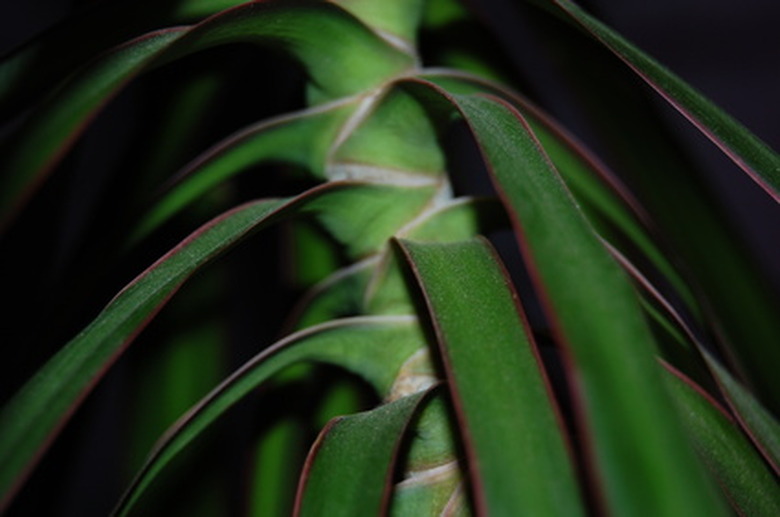The Best Soil For A Dracaena
Dracaenas (Dracaena spp.) are an excellent choice for home gardeners with children. The plants are the complete package: interesting to look at, easy to care for, and generally hardy. There are about 40 species of dracaenas and many more cultivars, which range widely in size and shape. All, however, have the same basic soil and cultural requirements. Don't forget to wear gloves when working in soil to protect yourself from soil-borne pathogens.
Soil & Containers
Step 1
Indoor, potted dracaenas will grow nicely in a potting mix made for houseplants, according to Clemson Cooperative Extension. To improve drainage, choose a potting soil that contains peat moss. Containers should have drainage holes in the base to allow water to drain quickly from the soil. Outdoors, choose a location that does not collect standing water and has rich, loamy soil.
- are an excellent choice for home gardeners with children.
- To improve drainage, choose a potting soil that contains peat moss.
Climate
Step 1
Dracaenas are tropical plants and are not frost tolerant, so for that reason, they are usually grown indoors. Outdoors, they can be grown in U.S. Department of Agriculture plant hardiness zones 10 and 11, with some species and cultivars able to tolerate temperatures in USDA zone 9.
Water & Sun
Step 1
One of the best things about dracaenas is that they are easy to grow, but don't let your little ones be too eager to water the plant. Too much water is a common problem in dracaenas. Root rot may occur if the soil becomes waterlogged. In addition, the plants are sensitive to fluoride, so if your tap water has added fluoride, don't use it to water your dracaena. And although the plants are known for their ability to thrive in low light, they grow best in bright but indirect light. Too much direct sunlight may burn the foliage.
- Dracaenas are tropical plants and are not frost tolerant, so for that reason, they are usually grown indoors.
Selected Species
Step 1
Dracaena fragrans is the most commonly grown species. Also known as the corn plant for its corn-like leaves, it is hardy in USDA zones 10 through 12 and will grow to heights of 50 feet if left alone in the ground. In containers, however, the plant only reaches maximum heights of between 4 and 6 feet. Dracaena marginata is a striking plant that grows on a slender, twisting trunk topped with a mass of long, slender leaves. Children are fascinated by the plant's common name — the Madagascar dragon tree — and by its sword-like leaves. This dracaena grows best in USDA zones 10 through 12 and reaches maximum heights of 20 feet outdoors but only 6 feet when grown in a container.
